Annual Guide to E-Bikes – More Growth and Innovation Ahead
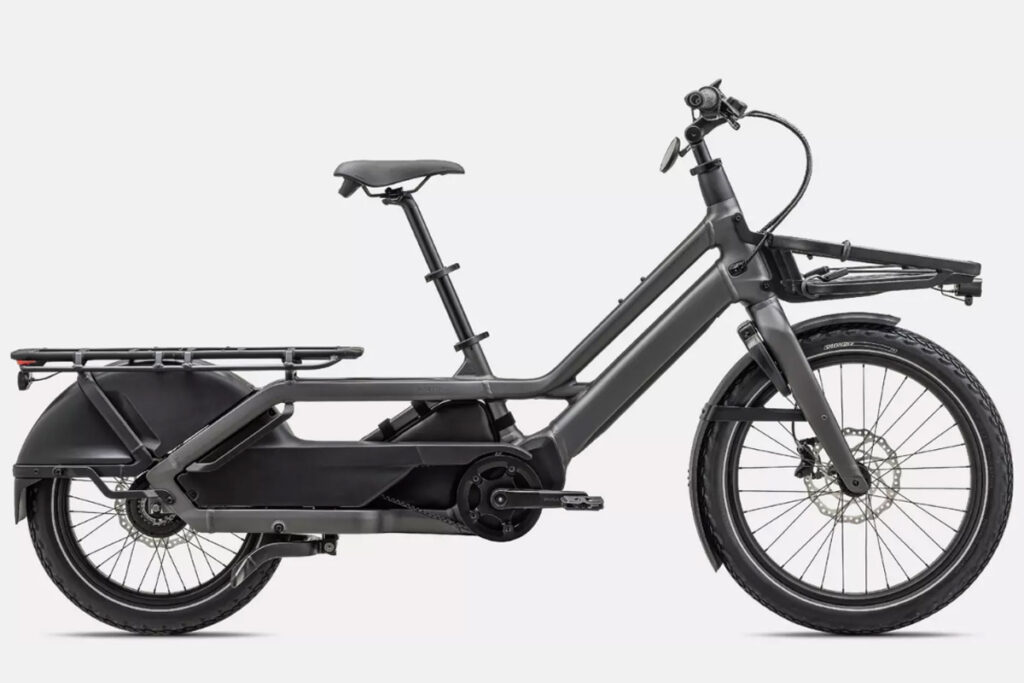
In some ways e-bikes almost seem old-fashioned and already taken for granted, when there are newer, bright shiny things to capture our attention such as e-scooters or light electric vehicles.
But the Australian e-bike market really only started to take off just seven years ago and despite a post-covid drop in import numbers and a range of other challenges that we’ll highlight in this overview, there’s still plenty of spark left in the e-bike market.
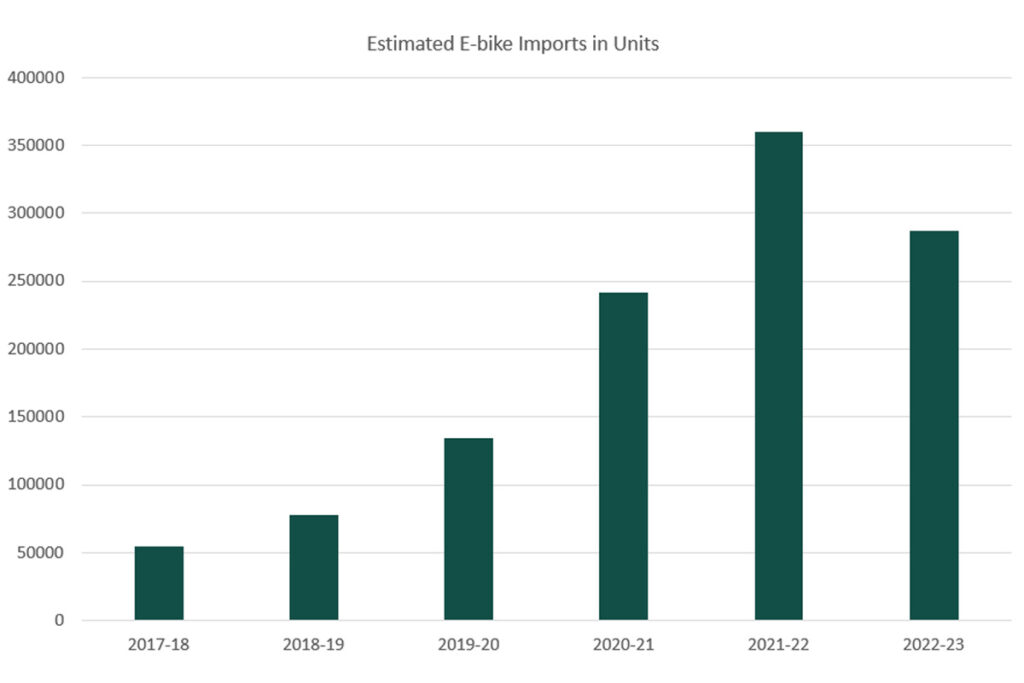
From Zero to Hero in Five Years
As you can see from the chart above, between 2017-18 and 2021-22 the ebike market took off in Australia. In fact for those years the CAGR (compound annual growth rate) of imports was an astonishing 45.9% per year.
Imports have dropped in the most recently available post-covid data, but by a smaller percentage than analogue bikes (non e-bike) have dropped.’
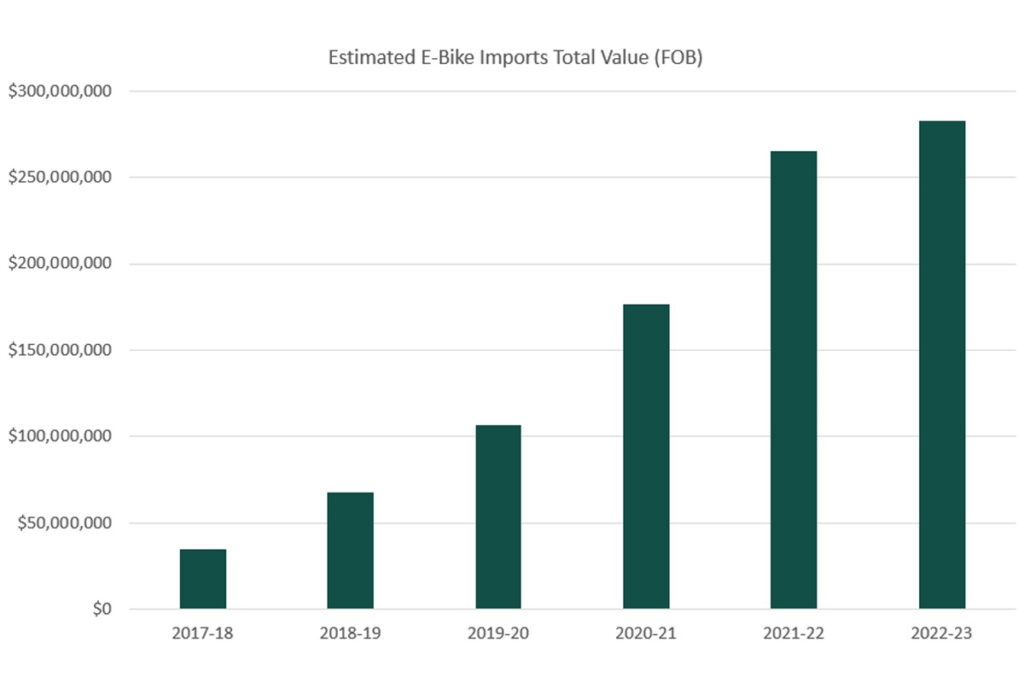
Thanks to the much higher unit value of e-bikes compared to analogue bikes, even though there are more than twice as many analogue bikes imported into Australia than e-bikes, the total value of e-bikes imported is now close to parity and has even been higher than analogue bikes for five separate months of import data over the past two years.
Studies have shown that e-bikes tend to be ridden further and more frequently. Being slightly heavier and faster they’re also a little harder on tyres, drivetrain and brakes, which means more maintenance and replacement parts, mainly done by busy bicycle shop workshops around Australia.
In a nutshell, e-bikes, which were shunned by most bike shops just a decade ago, have been the saviour of the Australian bicycle industry. Meanwhile, out on our roads, cycle paths and trails, we see more people riding e-bikes than ever before including many who would not otherwise be riding at all.
An E-Bike for Everyone
There’s an e-bike for just about everyone and for every use case. The number of categories and sub-categories is continuing to grow.
Here’s a summary of eight types of e-bikes. Within these there are more nuanced sub-categories. We could go into further detail, but that’s beyond the scope of this article.
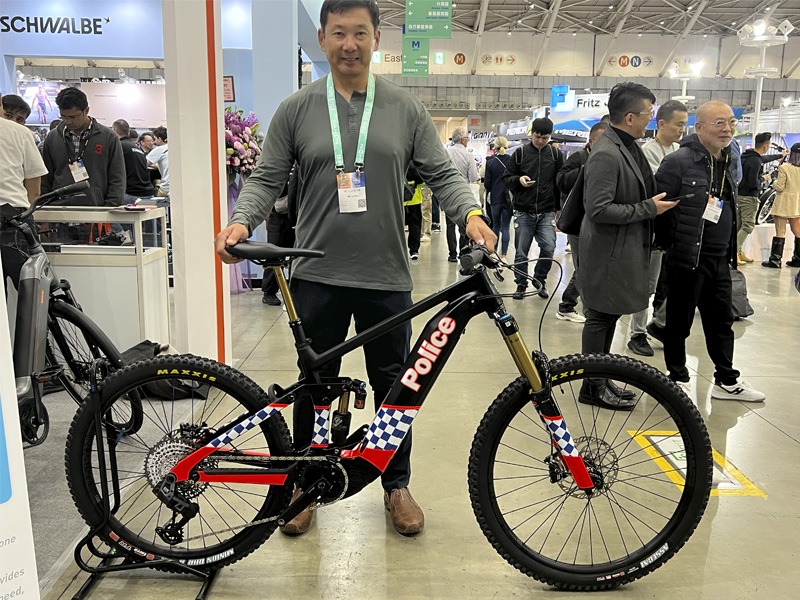
E-Mountain Bike
E-MTB is the number one category of e-bikes in Australia. Many of them are also ridden on road, rail trails or other uses. In some cases they’ve perhaps never see a mountain bike trail.
Mountain biking is very strenuous, particularly in the Australian summer. It’s not the flats or descents that are the problem, it’s the climbing, during which exertion goes way up and the wind cooling effect goes way down.
E-MTB’s let a far wider group of ages and fitness levels have fun on many more trails and longer rides, for a much larger season of the year.
This far larger potential ridership has encouraged all levels of government, particularly tourism departments plus some private companies to invest heavily in new or expanded mountain bike parks, which in turn encourages more riders, who buy more e-mtb’s and so the virtuous circle keeps turning.
There are some huge new mountain bike park developments still in the pipeline, subject to ongoing environmental approval processes in some cases, so there’s no reason the e-mtb category won’t continue to be strong.
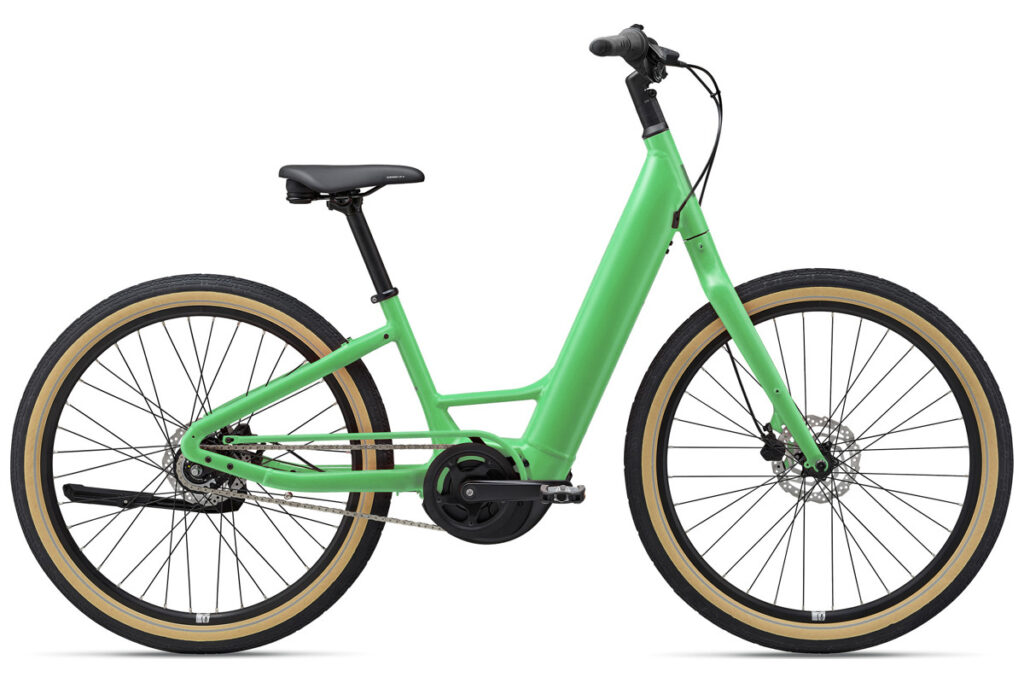
E-Commuter / Recreation / Utility
Globally this is the biggest selling category of e-bikes but probably number two in Australia.
An increasing number of these bikes feature ‘step through’ frames that are easier for riders to get on and off.
One of the cultural changes for the better that e-bikes have accelerated here is burying the outdated, sexist notion that was part of bike culture for a century that a ‘men’s’ bike’ had a high top tube and a low top tube, step through frame denoted a ‘ladies’ bike’.
It’s difficult to design a step through frame with adequate strength and torsional stiffness without adding size and weight to the frame tubes. But with the power assist of an e-bike, some extra weight is far less of a problem, so step through e-bikes make a lot of sense for everyone, regardless of gender.
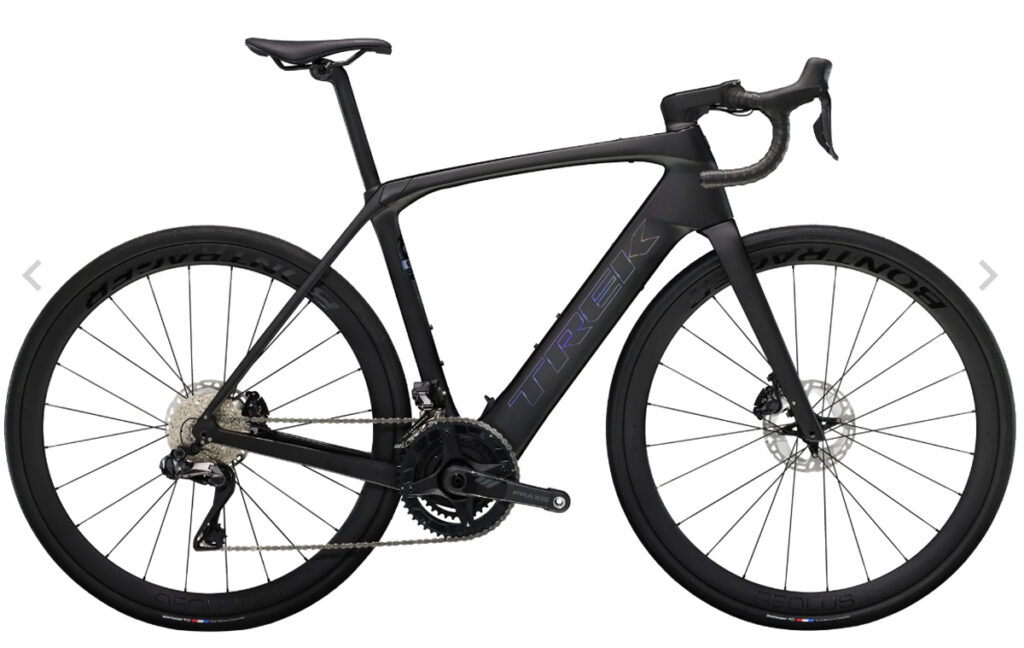
E-Road / Gravel
These bikes are lighter weight and more sporty. They’re popular with older riders and couples where one partner might be slower than the other, so some e-assistance allows them to keep up.
The e-road category has struggled to gain market traction in Australia due to the 25 kph speed assist limit. It’s not too hard for road riders on analogue bikes, particularly when riding in a bunch, to exceed this speed. Even if it’s only by a few kilometres per hour, then the e-road bike rider finds themselves just having to push a heavier bike with no power assistance.
Within e-road there are ‘stealth’ bikes with smaller, more lightweight batteries, motors and control systems that are very hard for a casual observer to even notice. Then slightly heavier, longer range and higher torque versions.
E-Gravel is relatively new compared to e-road, and doesn’t suffer quite so much from the speed assist limit, due to lower speeds typically ridden on gravel roads.
Gravel in general has been a huge growth market over the past decade. Motor traffic is the bane of cyclists’ existence and there are over half a million kilometres of dirt and gravel roads in Australia where you can ride for hours without seeing a car. They’re also often used for general urban riding.
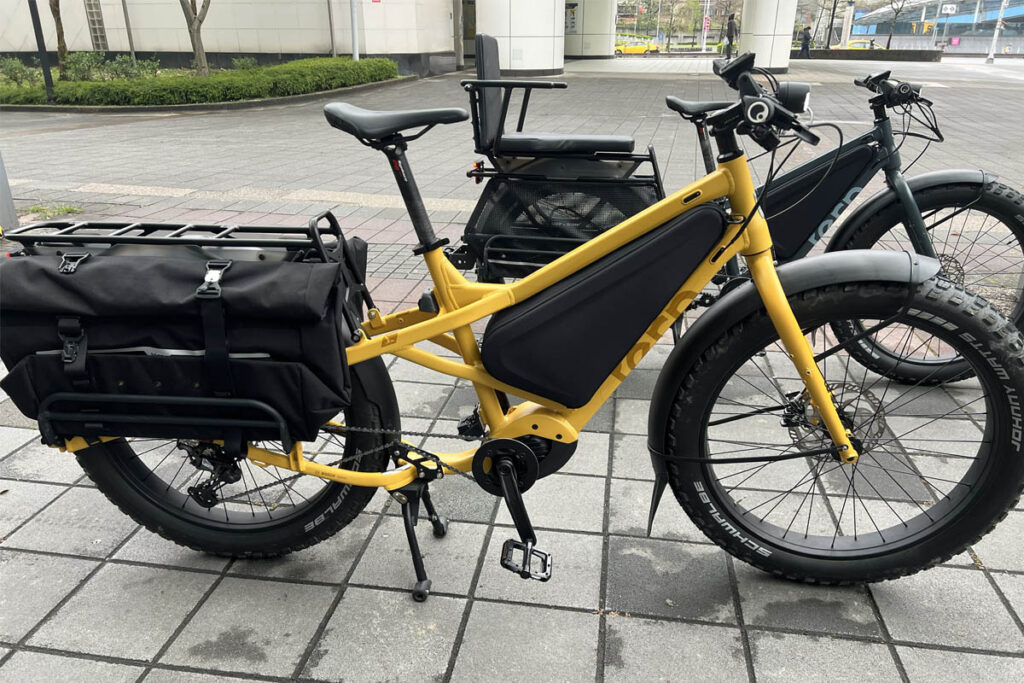
E-Cargo
This is a fast-growing category that includes food delivery, parcel delivery and family e-cargo bikes, each with their own design refinements. Often the ‘cargo’ for e-cargo bikes in Australia is kids being taken to school or other destinations.
We’re going to do a more in depth dive into this category in our December newsletter.
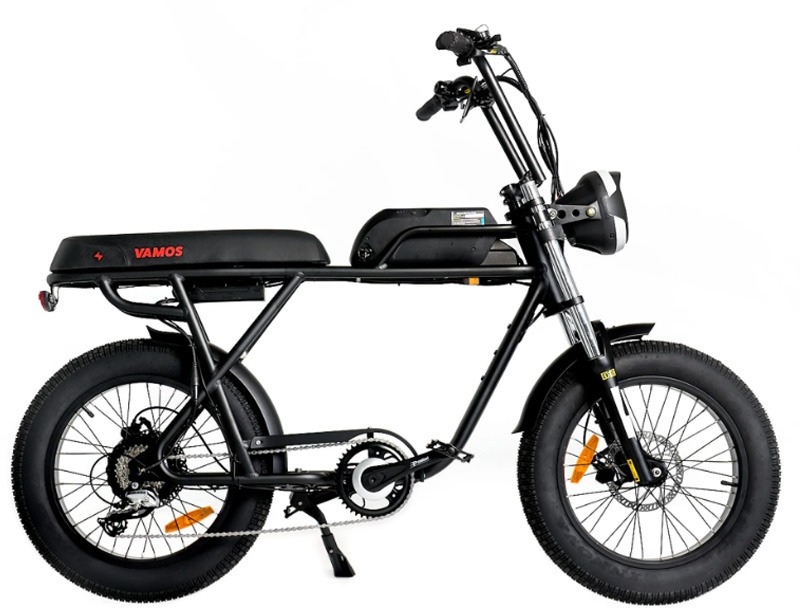
E-Cruiser
Sometimes also called “California Beach Cruisers”, these bikes are characterised by fat tyres, long seats, often at a fixed height and retro motorcycle styling.
None of the major traditional bike brands have embraced this style of bike, but there have been plenty of new players eager to fill the gap.
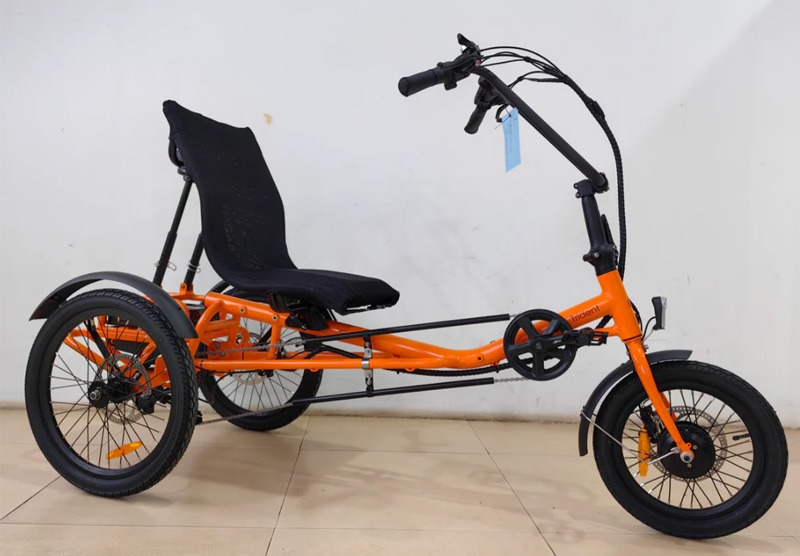
E-Trikes
These models are rapidly gaining in popularity. They’re ideal for older people and for people with a disability.
This is a classic example of where adding even a road legal 250 watt motor can make all the difference. It turns a bike that would otherwise be very strenuous to ride, especially uphill, into something that opens a whole new world of enjoyment, mobility, self-esteem and independence to a huge number of previously ‘hidden’ people.
There’s bound to be more growth in this market, which the major brands are still largely ignoring.
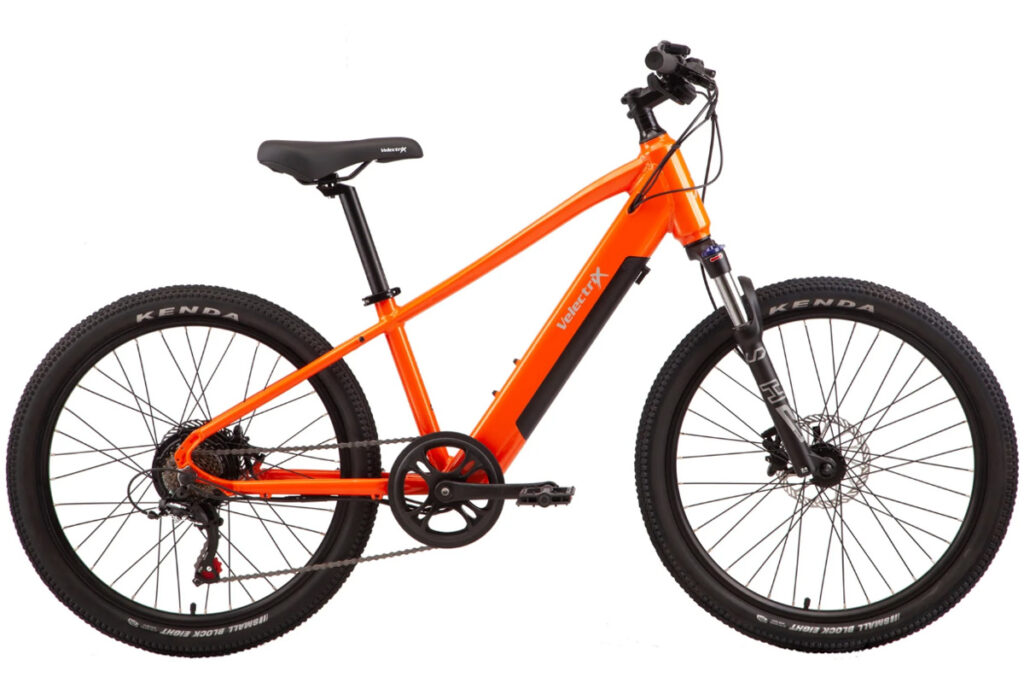
E-Kids
Does a kid really need electric power assistance? It turns out there are multiple markets for kids’ e-bikes.
One is e-mtb. If mum and dad are on full sized e-mtb’s then all of a sudden, little Johnny and Mary can’t keep up. So some well cashed up families are buying them kids e-mtb’s.
Then there’s a plethora of ‘mini e-bikes’ some of which that don’t even have pedals, that you can see being ridden at any local skate park or BMX track. Some of these are powered with electric power tool motors and batteries.
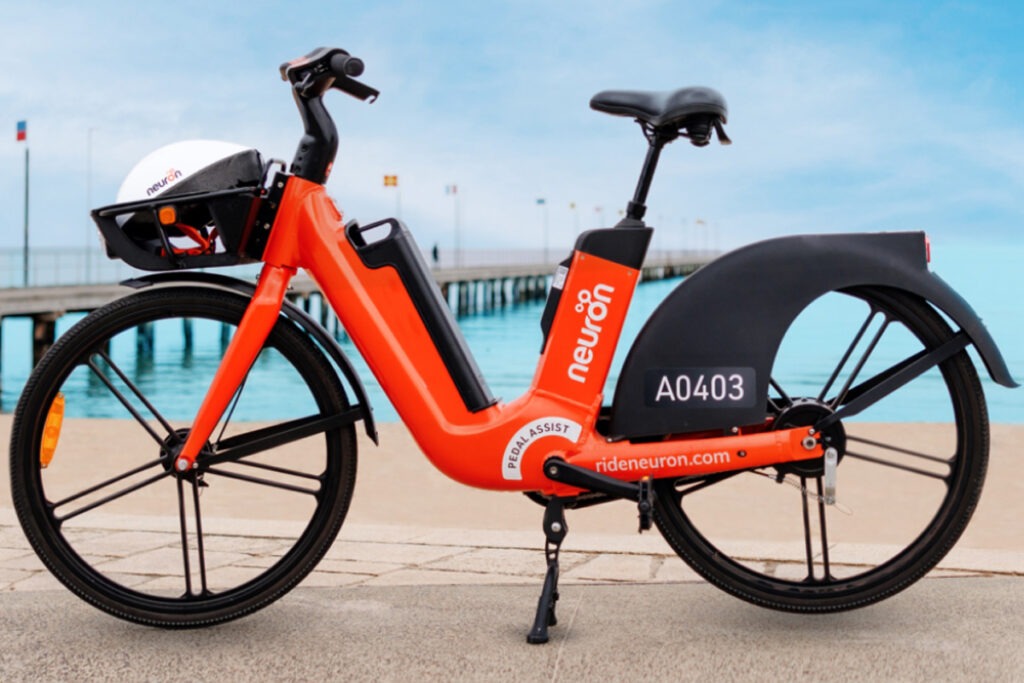
E-Share Bikes
As we documented recently in this article, bike share is growing rapidly across Australia. The fleet has almost doubled in two years from just over 5,000 to just under 10,000 bikes.
Although this number is tiny compared to private bike sales and ownership, share schemes offer an important transport option and also a “gateway drug” to introduce new people to cycling or re-acquaint people after a long break.
The data from both Australian bike share operators and global ones has shown that e-power assist share bikes are ridden far more than non e-bike options. Consumers are prepared to pay more to take the e-bike option.
With the recent closure of the struggling Airbike, that had an all analogue bike fleet, Australia’s bike share is almost entirely e-bike based now.
Power and Speed
In Australia most e-bikes sold by the major brands conform to the European Pedelec Standard EN15194 which mandates a maximum continuous power of 250 watts and a maximum speed at which the power assist cuts out of 25 kph.
This standard has been adopted by all Australian states and territories, although NSW recently increased their legal power limit to 500 watts.
These regulations only apply to ‘public use’ ie roads, cycle paths etc. You can ride whatever you want on private land.
Via this loophole, it is legal to import and to sell bikes of higher power, with a very flaky and rarely, if ever enforced proviso that these bikes are for private land use only.
As to what proportion of e-bikes sold here exceed those speed and power limits, that’s anyone’s guess, but the number is very significant.
Of the eight bike categories listed above, e-cruiser and e-cargo – in particular food delivery bike, are probably the two that have the most higher powered, higher speed bikes.
Many of these bikes have double or triple the legal e-bike power limit, often with throttle control and no 25kph speed restriction.
When it comes to e-cruisers local suburban newspapers and social media is awash with articles and letters, typically from an older pedestrian complaining of being endangered by a young person riding too fast / too close on an e-cruiser bike.
In the case of food delivery bikes, these are often 20 inch wheel, direct Chinese imports that as well has having high powered hub motors and throttle controlled high speed motors, have huge capacity batteries, sometimes four times the size of typical e-bike batteries. We’ll talk more about these under “Fire!”
Is it actually a problem that e-bikes are being sold here with higher power and speed than the current law allows?
For example in New Zealand, e-bikes can have up to 300 watts of continuous power and there is no speed limit for pedal assistance, so in practice they can go well over 30 kph in favourable conditions.
In the USA almost all states have adopted a three class system, which has been lobbied for over the years by bicycle advocacy groups.
Class One is only pedelec, with 750 watts power and 20 mph (32.9 kph) maximum power assist.
Class Two is the same as Class One but also allows throttle control.
Class Three is the same as Class one but allows up to 25 mph (40.23 kph)
There are tighter restrictions on the usage of bikes as they go up through the classes.
In Europe, as well as having the EN15194 25 kph 250 watt standard there’s a “Speed Pedelec”, known as S-pedelec, standard which allows up to 45 kph and up to 4,000 watts.
Most bikes sold in this category have far lower power than that, say 500 to 1,000 watts.
Riders of S-pedelecs must hold a current moped (motor scooter) licence and be 16 years or older. There are also a range of other requirements for s-pedelecs including being licensed and having a number plate, rear view mirrors, a moped approved helmet (closer to a motorcycle helmet) and so on.
The S-pedelec standard has been in place for years, but these bikes only make up very small percentage of the overall European e-bike market.
There’s a strong argument for allowing higher power in certain use cases. For example commercial e-cargo needs more power, especially for parcel delivery, if we’re going to see mass adoption of delivery e-bikes that can carry say 250 kg of parcels.
Fire!
The potential for government over-reaction and miss management of battery fires is probably the biggest single threat facing the Australian e-bike sector right now.
We’ve all seen the shocking photos and headlines about highly dangerous and damaging lithium-ion battery fires.
I recently attended and reported on a battery forum, in which a fire department expert said he’d never seen a battery fire caused by a reputable, standards compliant brand of battery or charger.
The problem is the non-compliant equipment, especially chargers, that are either the wrong voltage and/or don’t have the appropriate battery management system circuitry to cut off the charging once the battery is fully charged.
Australia still allows multi-national food delivery companies can employ “gig workers” and put the onus on the underpaid workers, who often don’t speak English and may be here on temporary or student visas, to provide bicycles and battery charging.
It’s little wonder that multiple batteries end up being charged in a crowded apartment with sub-standard chargers, sometimes overloaded circuits and inadequate fire escape options. What a recipe for disaster.
In my opinion, if the delivery companies were fully responsible for not only providing standards compliant bikes, but all battery chargers and charging stations.
E-bikes are sometimes being blamed by media for fires they haven’t caused. There have been cases where a battery power drill or other battery device has caught fire, but there’s also an e-bike in the shed and media reports assume that the e-bike is the cause of the fire.
All of this is leading to a strong risk of over-reaction by government and insurance companies building strata operators and other key decision makers. Standards compliant e-bikes and battery chargers from all of the reputable brands and wholesalers are not the problem here.
Already, bicycle shops are finding it hard to get insurance if they stock e-bikes as almost all now do. Their premiums have been increasing steeply. Meanwhile strata organisations are recommending that their members ban e-bikes entirely from apartment buildings.
More Growth and Innovation Ahead
If we can sensibly take the correct actions to minimise fire risk by cracking down on the culprits and not the innocent majority, then e-bikes have a very bright future in Australia.
It’s likely we can expect more sophisticated control and display systems, all made easier on an e-bike where all devices can tap into the main battery unit.
Smaller and lighter motors are also being developed. There’s heavy automotive industry investment in the e-bike sector, such as Porsche who have acquired high end e-bike drive brand Fazua, MTB brand Greyp and more. With the exception of Shimano, all of the leading e-bike drive system manufacturers including Bosch, Yamaha and Brose come from auto industry backgrounds.
This means you can expect further e-bike innovations and improvements ahead. E-bikes are certainly not a fad, but an important part of our future transportation and recreation.
